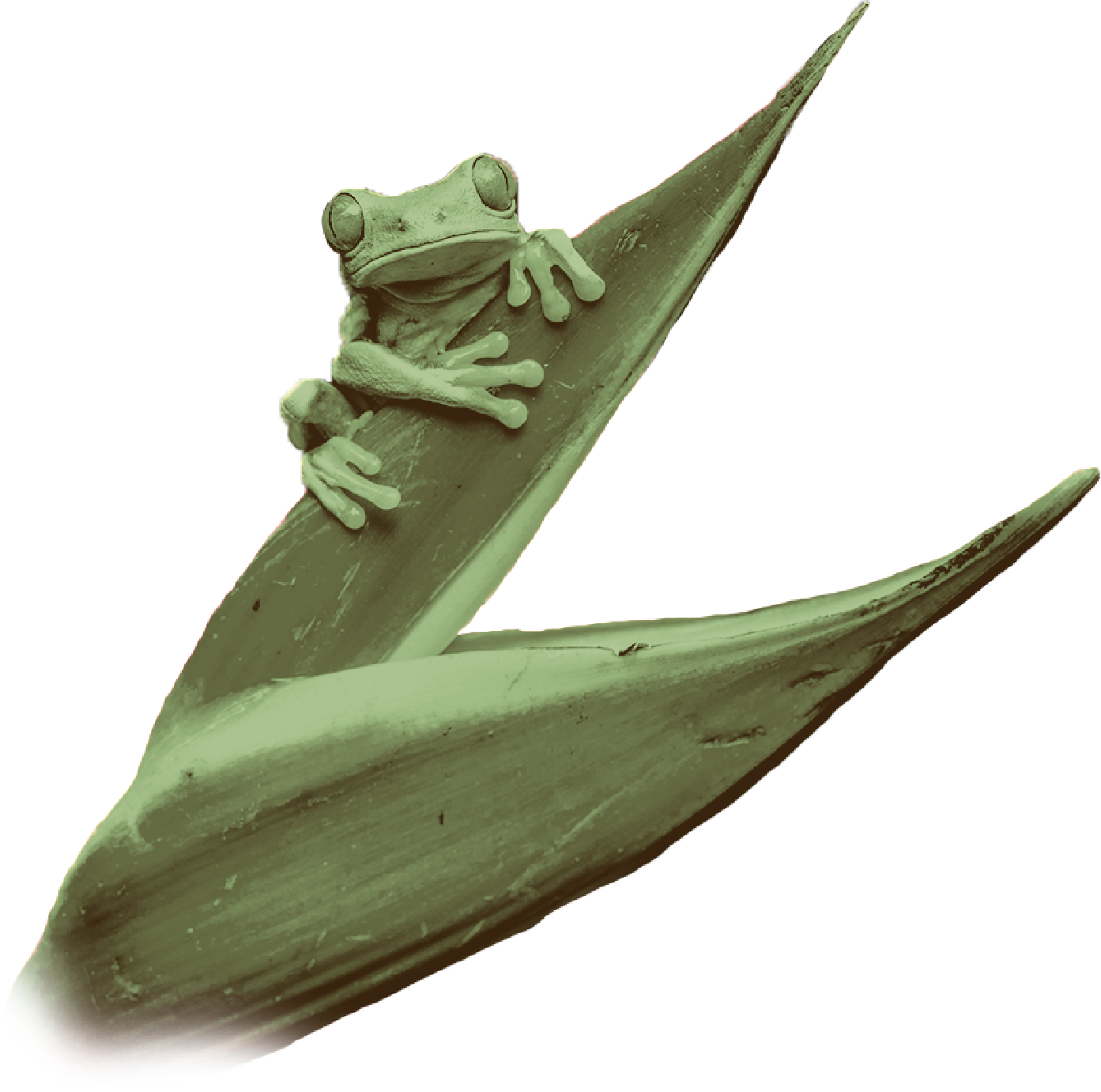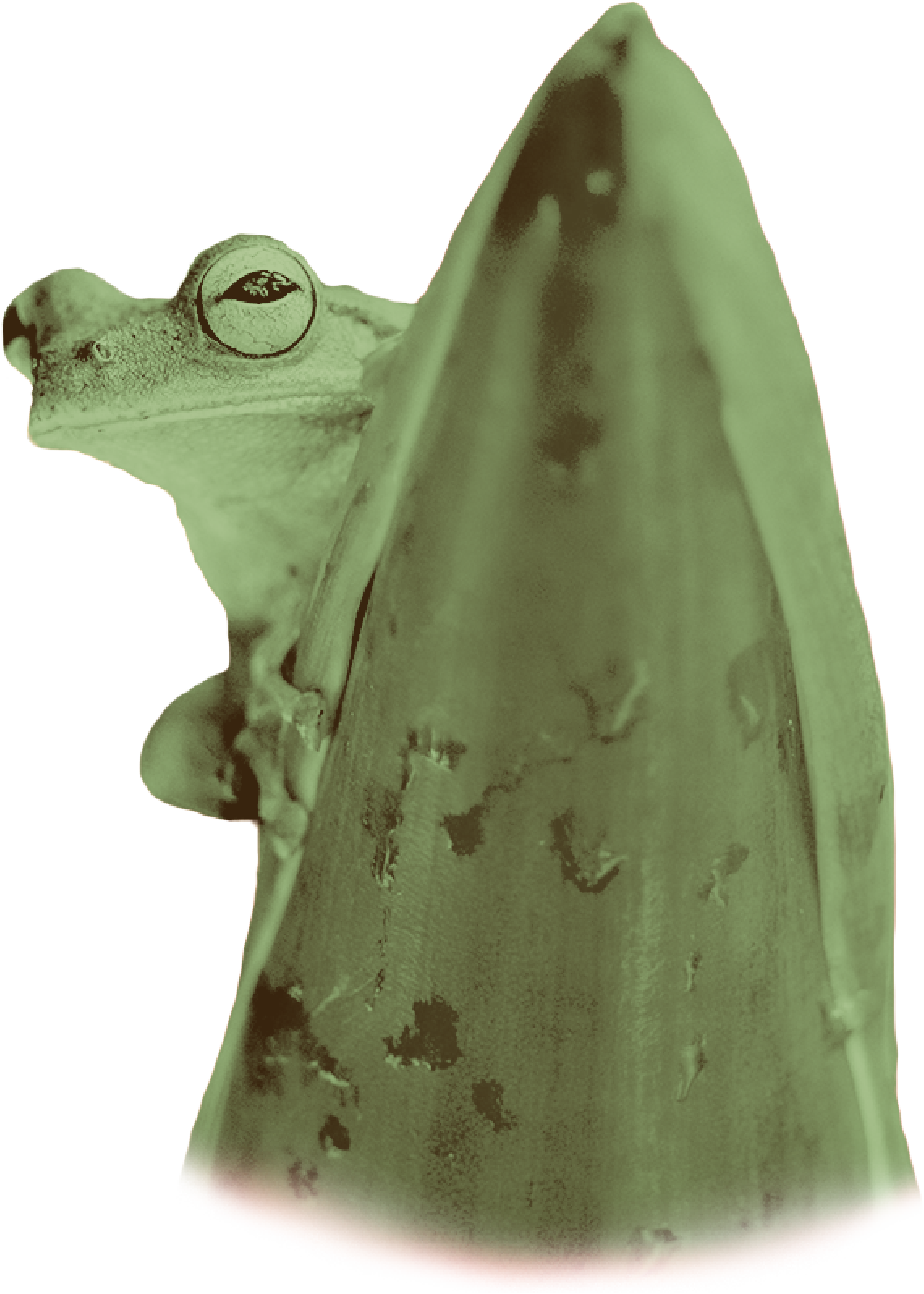An Overlook of Frogs
Frog, common name for an amphibian of the order Anura. Frogs are found all over the world, except in Antarctica. They require moisture and usually live in quiet freshwater or in the woods. Some frogs are highly aquatic, while others are better adapted to terrestrial habitats. Among the latter type, those with stout bodies and thick skins are often called toads, although the name toad is sometimes restricted to members of the most terrestrial family of the Anura, the Bufonidae.
Frogs lack tails in their adult stage. They have short, neckless bodies; long, muscular hind legs specialized for jumping; and webbed feet for swimming. The skin is smooth, usually some shade of green or brown, and often spotted. Frogs have no outer ears; their prominent eardrums are exposed on the sides of the head. The bulging eyes have nictitating membranes to keep the eyes moist. Adult frogs have lungs, but their breathing mechanism is poorly developed. At rest they breathe mainly through the mouth lining, filling the lungs only occasionally. When in wet places they also absorb much dissolved oxygen through their skins. Frogs have true voice boxes and are noted for their various sounds. Frogs capture insects and worms with their sticky, forked tongue, attached at the front of the lower jaw. Some large tropical species eat small mammals and snakes. A few frogs have skin glands that can produce irritating or poisonous secretions.
 />
/>
Most frogs hibernate in underwater mud and lay eggs in early spring. With few exceptions fertilization is external. The eggs—up to 20,000 at one time—are fertilized as they are laid in the water and are given buoyancy and protection by a gelatinous covering secreted by the female. The gilled, aquatic larvae, or tadpoles, hatch after 3 to 10 days; by the end of their first summer most frogs have completed their metamorphosis to the air-breathing, tailless, carnivorous adult. In some species, however, eggs are laid on land, and the young hatch as tiny frogs. In a handful of species the female gives birth to live young, either as tiny frogs or tadpoles. Growth to adult size usually takes several years.
There are over a dozen families of frogs; the term "true frog" is often applied to members of the family Ranidae. The cosmopolitan genus Rana belongs to this family and includes many of the commonest frogs of North America, such as the bullfrog, R. catesbeiana, and the leopard frog, R. pipiens. Species of Rana are important laboratory animals; they are readily available and easy to handle and maintain. Field biologists have in recent years noticed declines in the populations of frogs and other amphibians worldwide. Although pollution and habitat destruction are contributing causes, the main culprit is believed to be a fungus, Batrachochytrium dendrobatidis, that causes a skin infection. Research has suggested, however, that outbreaks of the fungus are due in part to climatic changes possibly linked to global warming.